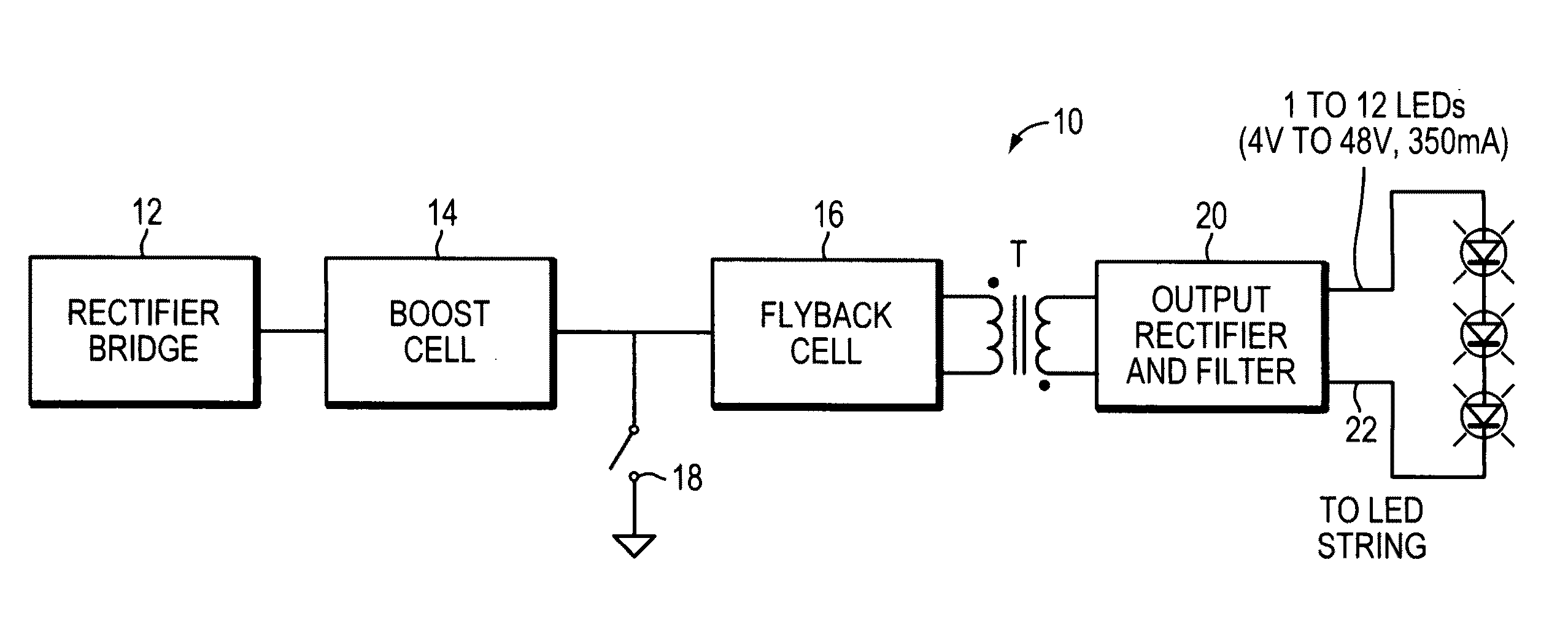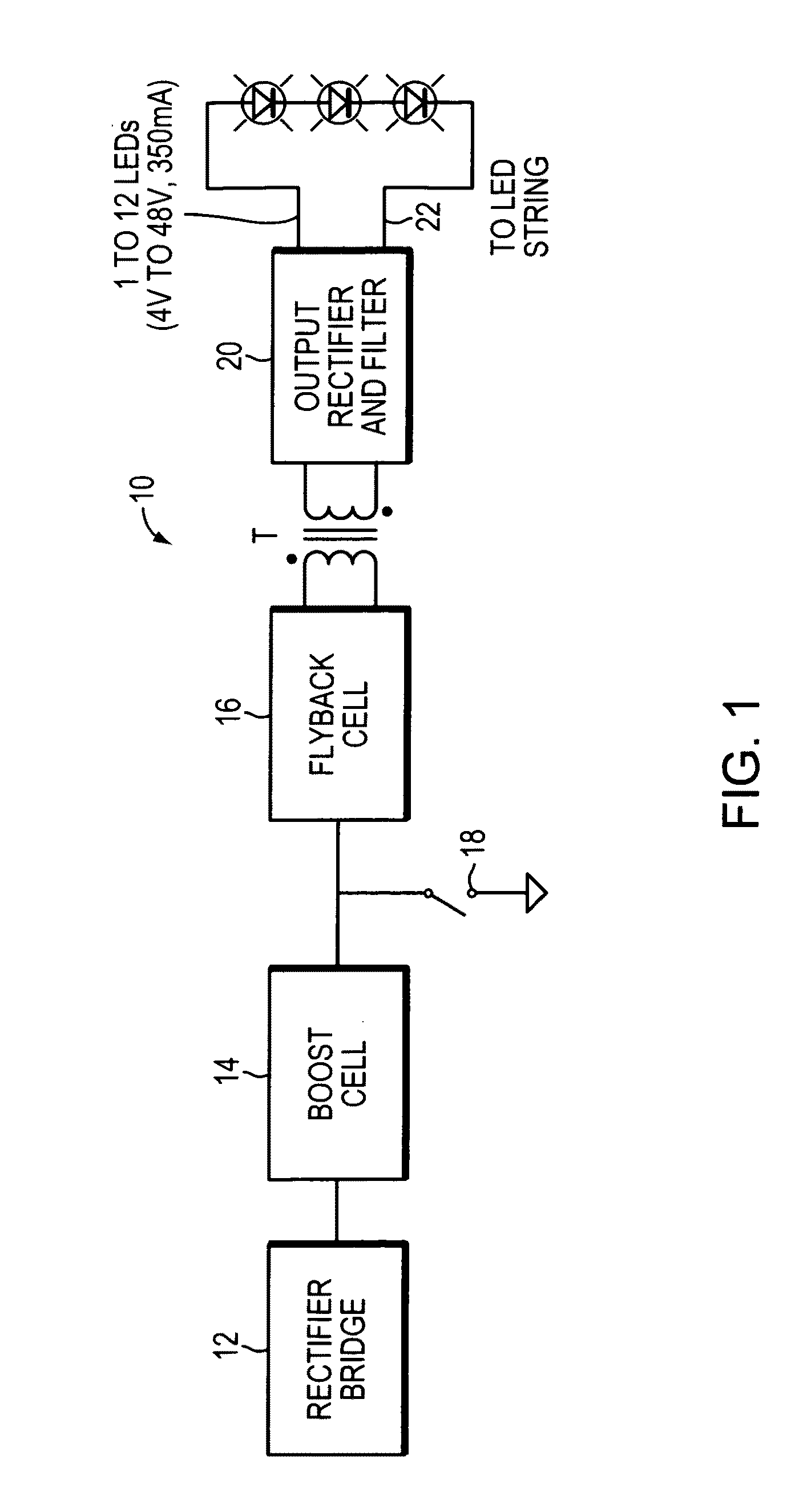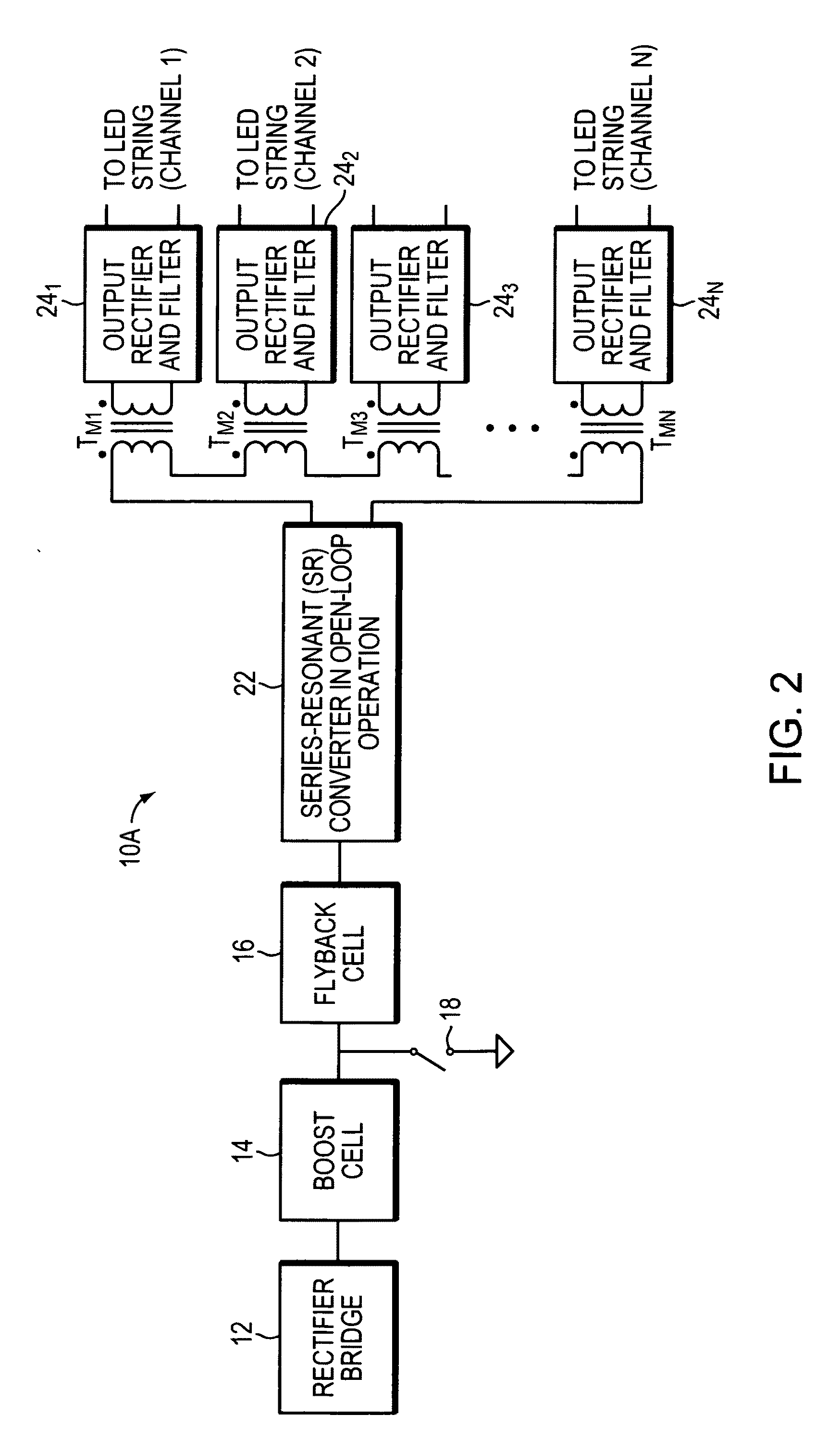LED Illumination systems
a technology of led illumination and led light, which is applied in the direction of climate sustainability, electrical equipment, and efficient power electronics conversion, etc., can solve the problems of consuming a large amount of electrical power, fluorescent light sources have a relatively short life of approximately 20,000 hours, and fluorescent light tubes are usually quite fragile, so as to improve reliability, reduce cost, and improve efficiency
- Summary
- Abstract
- Description
- Claims
- Application Information
AI Technical Summary
Benefits of technology
Problems solved by technology
Method used
Image
Examples
Embodiment Construction
The present invention is directed to LED illumination systems and methods using novel converter power supplies. FIGS. 1, 2, 3 and 3A, illustrate diagrammatically different embodiments of converter power supplies used with LED illumination systems. Converter power supplies 10, 10A, 10B and 10C include a rectifier bridge 12, a boost cell 14 (a boost converter 14), a flyback cell 16 (a flyback converter 16), and an output rectifier and filter 20 connected to a string of light emitting diodes (LEDs). Converter power supply 10A includes, instead of a single rectifier and filter cell 20, a series of resonant converters arranged for open-loop operation 22 and connected to several rectifier and filter cells 241, 242, . . . , and 24N coupled by transformers TM1, TM2, . . . , and TMN. Each output rectifier and filter cell provides current to a string of LEDs. The rectifier and filter unit together with the string of LEDs may be packaged as an illumination module, described below. Rectifier br...
PUM
 Login to View More
Login to View More Abstract
Description
Claims
Application Information
 Login to View More
Login to View More - R&D
- Intellectual Property
- Life Sciences
- Materials
- Tech Scout
- Unparalleled Data Quality
- Higher Quality Content
- 60% Fewer Hallucinations
Browse by: Latest US Patents, China's latest patents, Technical Efficacy Thesaurus, Application Domain, Technology Topic, Popular Technical Reports.
© 2025 PatSnap. All rights reserved.Legal|Privacy policy|Modern Slavery Act Transparency Statement|Sitemap|About US| Contact US: help@patsnap.com



